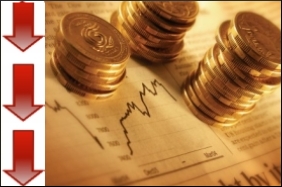|

|
India to grow at 7.8 percent in FY17: UN official
|
|

|
|
| Top Stories |
 |
|
|
|
Arul Louis | 29 Apr, 2016
A cautious fiscal policy and lower inflation coupled with reforms in some areas are putting India on its trajectory to hit a 7.8 percent growth rate, according to a UN economics specialist.
The UN Economic and Social Commission for Asia and the Pacific (ESCAP) 2016 survey released Thursday estimates that the Indian economy grew by 7.6 percent in 2015 and is projected to grow at the same rate this year and reach 7.8 percent next year, the highest in the region and overall in the world for a large economy. In 2014, the growth rate was 7.3 percent.
On the inflation front, ESCAP estimates last year's rate fell to 5 percent from 6.7 percent in 2014, but is expected to rise to 5.2 percent this year and 5.6 percent next year.
"The macro economic policy has been cautious, especially in the fiscal side but this has been a positive development in order to provide a good framework to increase the sentiment of the consumer," said Sebastian Vergara, the Economic Affairs Officer at the UN's Department of Economic and Social Affairs (DESA).
Asked at a media briefing here after the report's release about India's performance, he added, "At the same time the monetary policy has played an important role in reducing inflation reducing which is also playing a positive role for the Indian economy."
While the reforms will continue to contribute to high growth, he added a note of caution. "With respect to the structural reforms, I would say the picture is mixed," he said. "In some areas the Indian government has made important effort and I think that effort is beginning to pay off leading to increase in investment, but there are some areas where the pace of reforms are making slow progress."
The ESCAP report stressed the importance of private consumption as the main driver of the growth story in India in contrast to some of the countries in the region. This is "reflected in robust services activities relating to trade, finance, transport and communications, and real estate.," it said.
However, "rural demand was weaker due to the muted agricultural activity and slower rural wage growth due to subpar monsoon seasons," the survey noted.
With India's growth relying heavily on internal demand, the report said that "progress made in implementing structural reform and how rapidly large-scale stalled infrastructure projects are unlocked" will determine its course.
The report expected steady employment growth in the near term. It referred to the progress in reforming fiscal policy like the rationalisation of fuel prices, but noted that the implementation of the goods and services tax "remains an important reform that is being held up due to political deadlock."
Referring to the "Make in India" program launched by Prime Minister Narendra Modi, the survey said it "affirms that India is open for business" and also and noted India's better ranking in the World Bank's ease of doing business index where its poition rose by four places to 130 this year.
Looking at entire Asia Pacific region, the report said that economic situation is broadly stable, but the outlook is cloudy, the report said. The slowdown in China and its uncertain outlook are among the reasons it cited for the cautious prognosis. Others include the gradual rise in the US interest rates and the currency volatility and the capital outflows.
To reboot regional growth, ESCAP said broad-based productivity gains and rebalancing the economies towards domestic and regional demand was necessary, rather than relying on exports.
Improving productivity in the rural sector is important in battling poverty in the region, the survey said, because more than half the population - about 2.1 billion people - live in rural areas.
"Industrialising agriculture and raising agricultural productive must be at the centre of this effort in view of the great mass of the remaining poor and the food insecure people who live on agriculture and inhabit rural areas," it said.
The problem of a large and unsustainable "surplus labour" in agriculture can only be solved through policies that enable the movement of labor and capital across agriculture, service and manufacturing sectors, ESCAP said emphasising the importance of rural industrialisation in meeting the goals of poverty alleviation.
|
|
|
| |
|
|
|
|
|
|
|
|
|
|
|
|
|
|
| |
| Customs Exchange Rates |
| Currency |
Import |
Export |
US Dollar
|
66.20
|
64.50 |
UK Pound
|
87.50
|
84.65 |
Euro
|
78.25
|
75.65 |
| Japanese
Yen |
58.85 |
56.85 |
| As on 13 Aug, 2022 |
|
|
| Daily Poll |
 |
 |
| PM Modi's recent US visit to redefine India-US bilateral relations |
|
|
|
|
|
| Commented Stories |
 |
|
|
|
|
|
| |
|